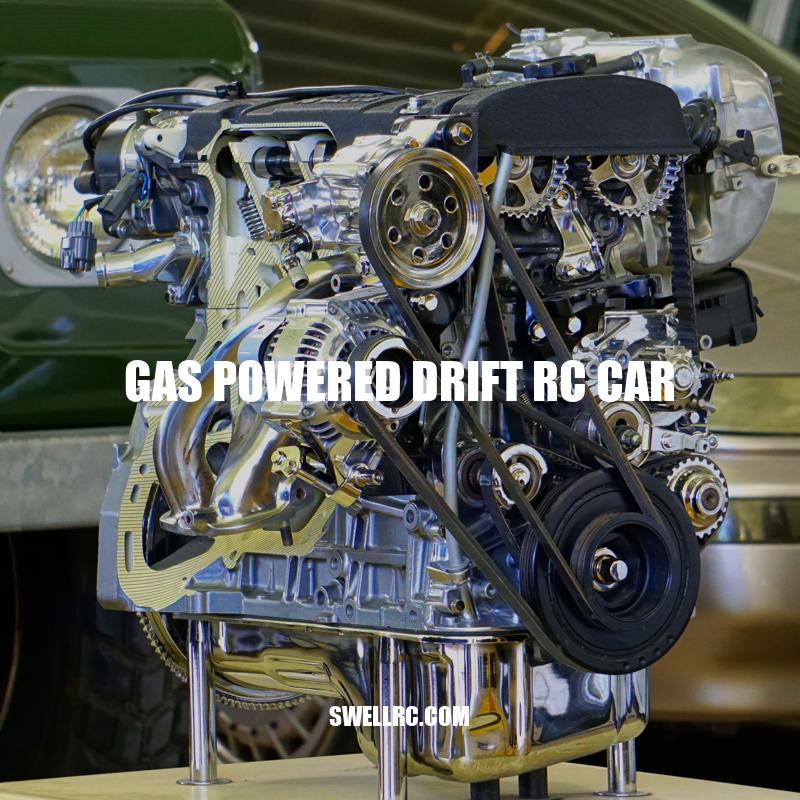Gas Powered Drift RC Cars: The Ultimate Guide
Gas powered drift RC cars are a perfect combination of high-speed racing and remote control vehicles. Designed to mimic the feel of professional racing cars, these miniature powerhouses offer a unique racing experience that is hard to match. More powerful than their electric counterparts, gas powered drift RC cars are equipped with an engine that runs on a specially formulated gas and oil mixture. This engine produces more horsepower, allowing the car to reach speeds of over 50mph. The combination of horsepower, speed, and agility makes gas powered drift RC cars a popular choice for enthusiasts looking for an adrenaline-pumping racing experience. To maintain full control of the vehicle while drifting around corners, racers must master the art of balancing the throttle, steering, and braking. The sense of challenge adds to the excitement, and once mastered, the experience is unmatched. Nonetheless, before making a purchase, it’s essential to know what to consider and how to choose the right gas powered drift RC car for your specific needs.
Gas powered drift RC cars come equipped with a small engine powered by a combustible mixture of gasoline and oil. These engines are similar to those found in lawnmowers and other small equipment. The engine drives the rear wheels of the car and produces more horsepower than an electric RC car. Gas powered drift RC cars are equipped with a two-stroke engine, which means the fuel mixture is compressed in the engine in two strokes of the piston rather than four strokes like a car engine. As a result, gas powered drift RC cars are more efficient than four-stroke engines, producing a higher RPM or higher revolutions per minute.
There are various websites and online communities where enthusiasts share their experiences, talk about the latest trends, and review products. For instance, hobby-grade gas powered drift RC cars are one of the most popular types of RC car that enthusiasts opt for. Hobby-grade RC cars are faster, more durable, and customizable than toy-grade cars. Websites like Tower Hobbies and Horizon Hobby offer an extensive selection of gas powered drift RC cars, all designed for serious hobbyists. Additionally, forums like RCTech and RCUniverse are excellent resources where you can access informative discussions about specific gas powered drift RC cars, get tips on maintenance and upgrades, and seek advice on any car issues you may experience.
How do gas powered RC cars work?
Gas-powered RC cars are a popular hobby for car enthusiasts and children alike. But have you ever wondered how these tiny vehicles operate? Unlike their electric counterparts, gas-powered RC cars rely on the combustion of fuel to create the power needed to propel the car forward.
At the heart of the gas-powered RC car is the engine. But unlike the engines found in our everyday cars, RC engines are compression ignition, similar to diesel engines. This means that the fuel in the engine is ignited not by a spark plug, but by being compressed to a specific point. The compression ratio and the glow plug temperature are responsible for controlling the actual ignition timing.
To start the engine, a fuel tank attached to the car is filled with a mixture of gasoline and oil. The fuel is then fed to the engine through a carburetor, where it is mixed with air and compressed by a piston. The compression of the fuel-air mixture results in a small explosion which pushes the piston down, creating power that moves the car’s wheels.
In order to keep the engine running, the fuel mixture must continuously be fed into the engine while the waste gases released by combustion are expelled out of the engine through an exhaust pipe. The engine’s speed is controlled by adjusting the amount of fuel and air that enters the carburetor and thus controlling the amount of fuel mixture that is compressed and ignited.
In summary, gas-powered RC cars utilize compression ignition engines which rely on the precise mixture of fuel and air being compressed and ignited to create the power needed to move the car’s wheels. These miniature engines are fascinating works of engineering and provide hours of fun for car enthusiasts of all ages.
Factors to Consider Before Purchasing a Gas Powered Drift RC Car
Before purchasing a gas powered drift RC car, there are several factors that you should consider. These cars are not cheap, and getting a good one requires careful attention. Here are some key factors to keep in mind when selecting a gas powered drift RC car:
- Brand and model: Look for a reputable brand with positive reviews. Brands that are known for their quality can be a bit more expensive, but they tend to offer better performance and durability. Check customer reviews online before making a purchase.
- Skill level: Gas powered drift RC cars require some skill to handle. For beginners, it’s best to start with a car that has slower speeds and responsive controls. Once you’ve mastered the basics, you can move up to a faster and more challenging car.
- Budget: Gas powered drift RC cars vary significantly in price, depending on the brand and model. While cheaper cars exist, they tend to be less durable and perform poorly. If you’re serious about this hobby, consider investing in a more expensive car that offers better performance and durability.
- Parts and upgrades: Consider the availability of spare parts and upgrades for your selected car. Look for cars with an extensive range of components that can be replaced or upgraded in case of damage or wear out.
In conclusion, gas powered drift RC cars are an exciting and challenging hobby that requires skill, patience, and the right equipment. Before purchasing one, it’s essential to consider various factors such as brand and model, skill level, budget, and parts and upgrades. Once you’ve selected a car, take the time to care for it, learn racing techniques, and enjoy the thrilling experience of gas powered drift RC car racing.



